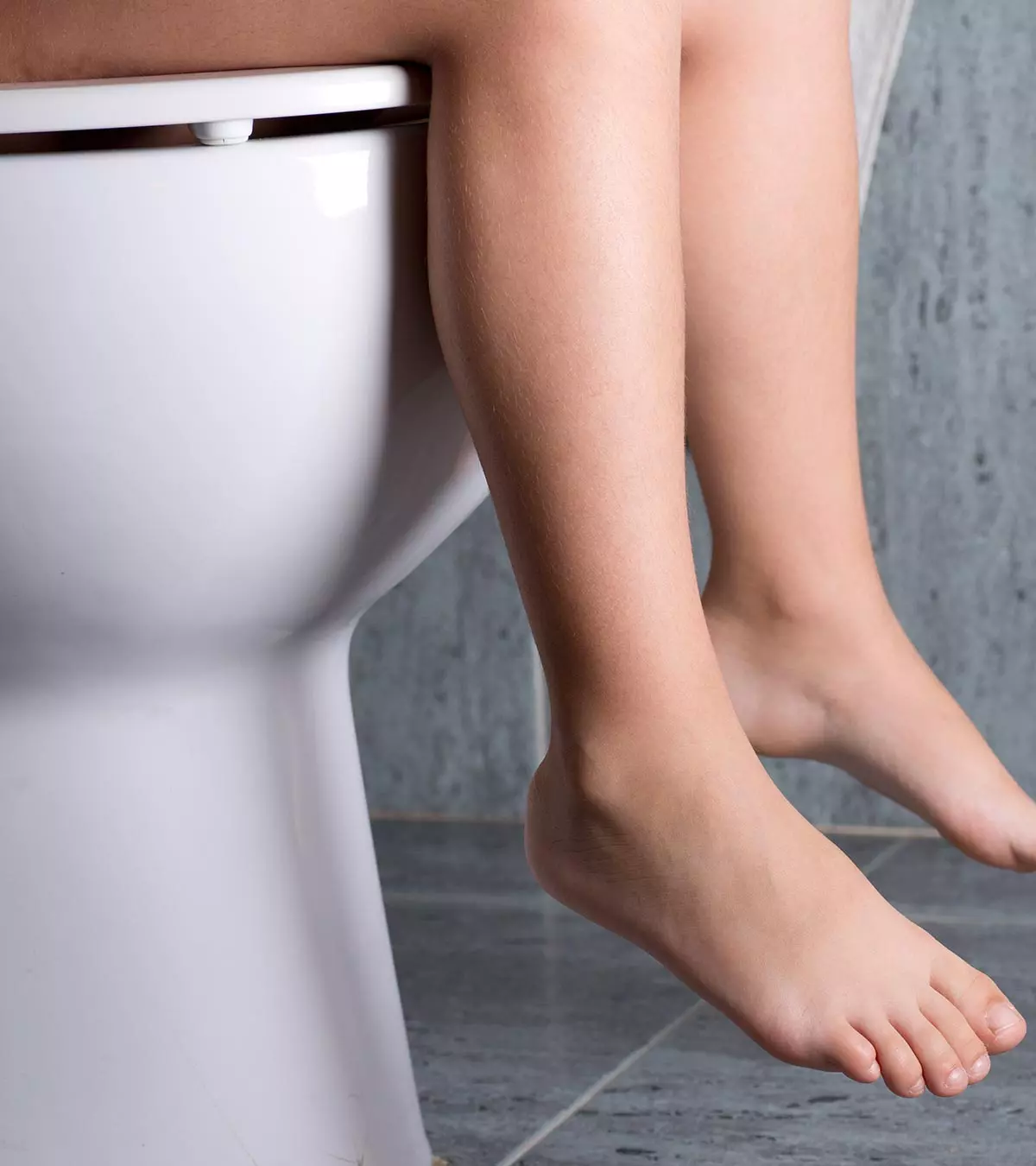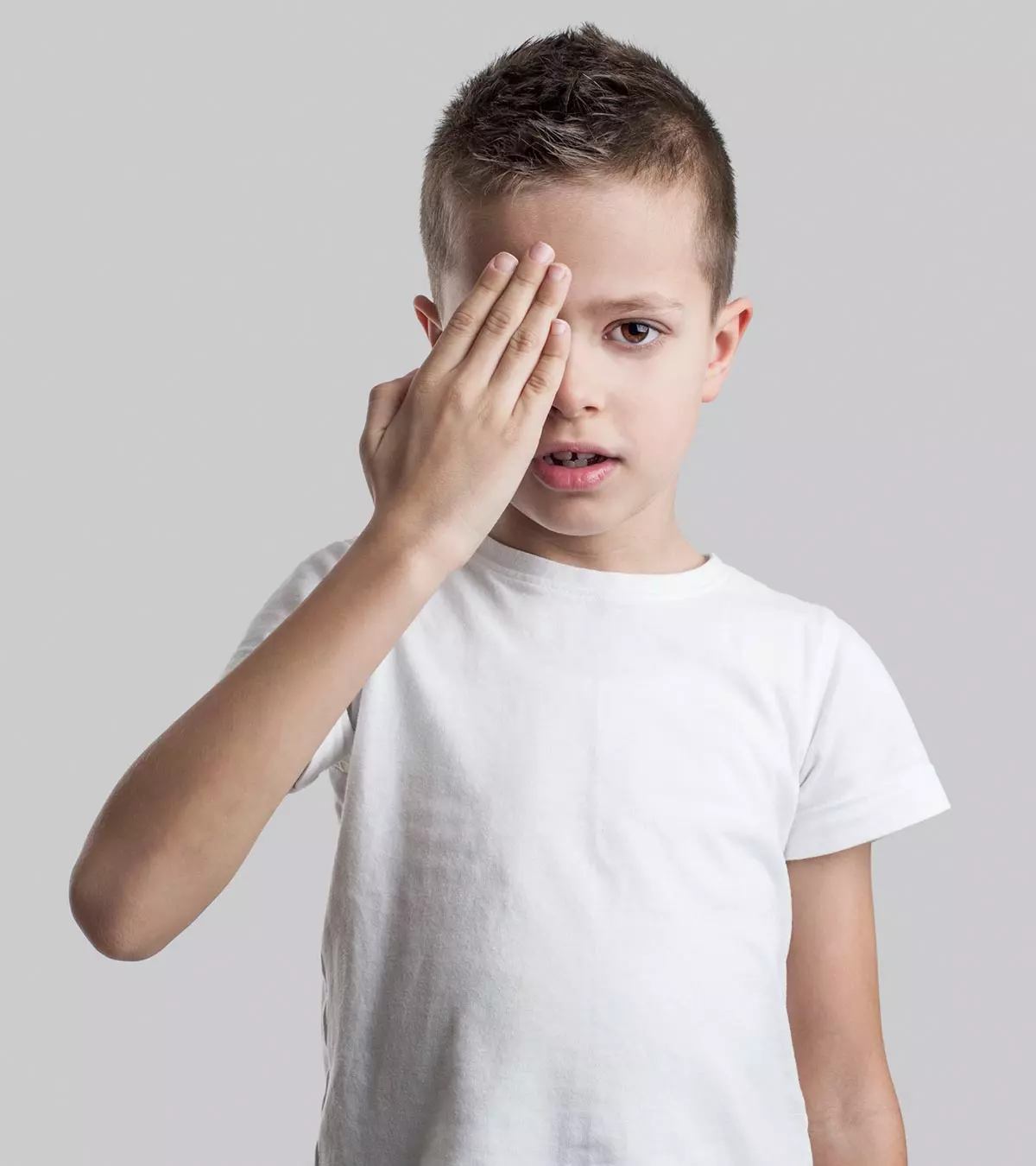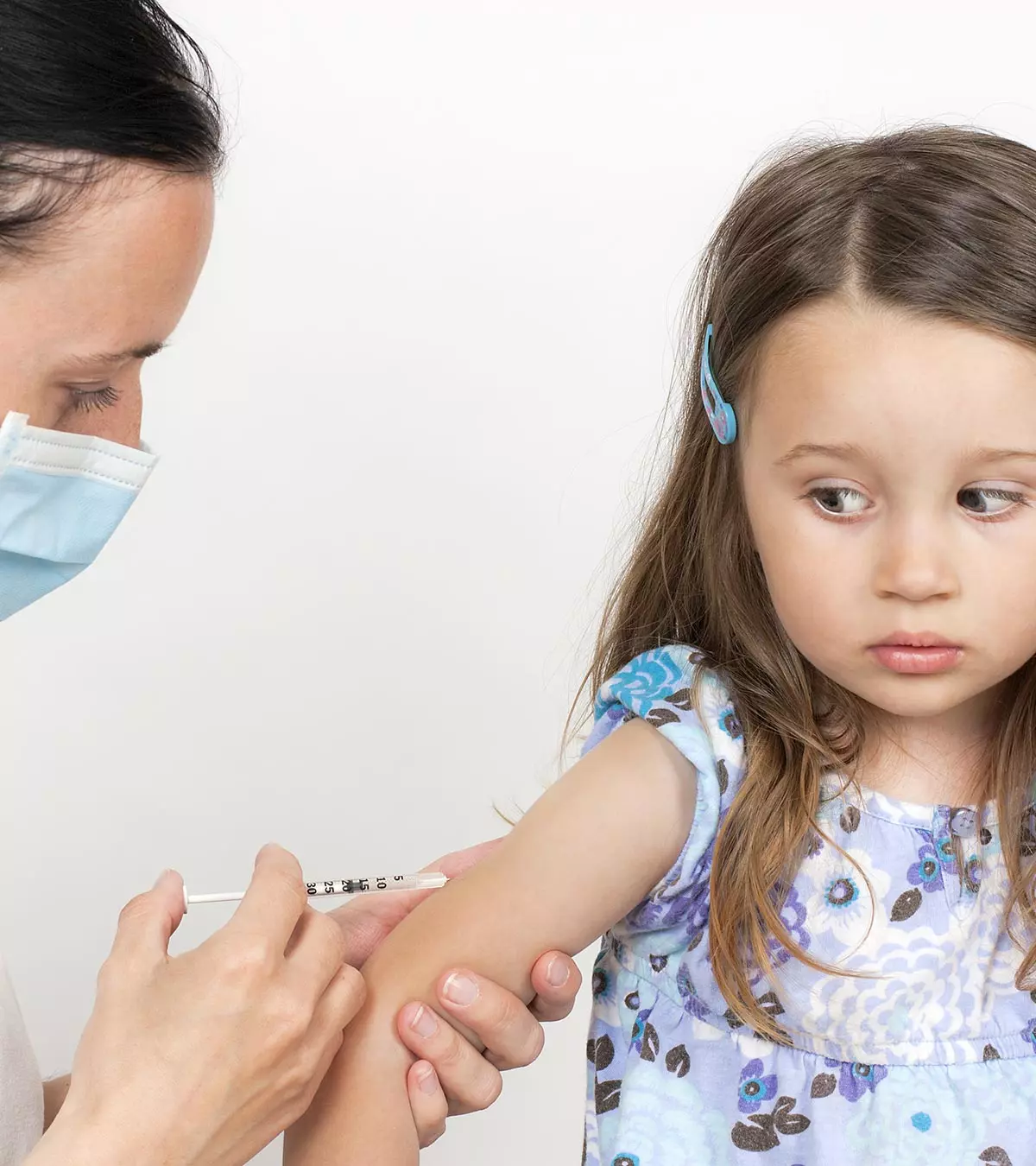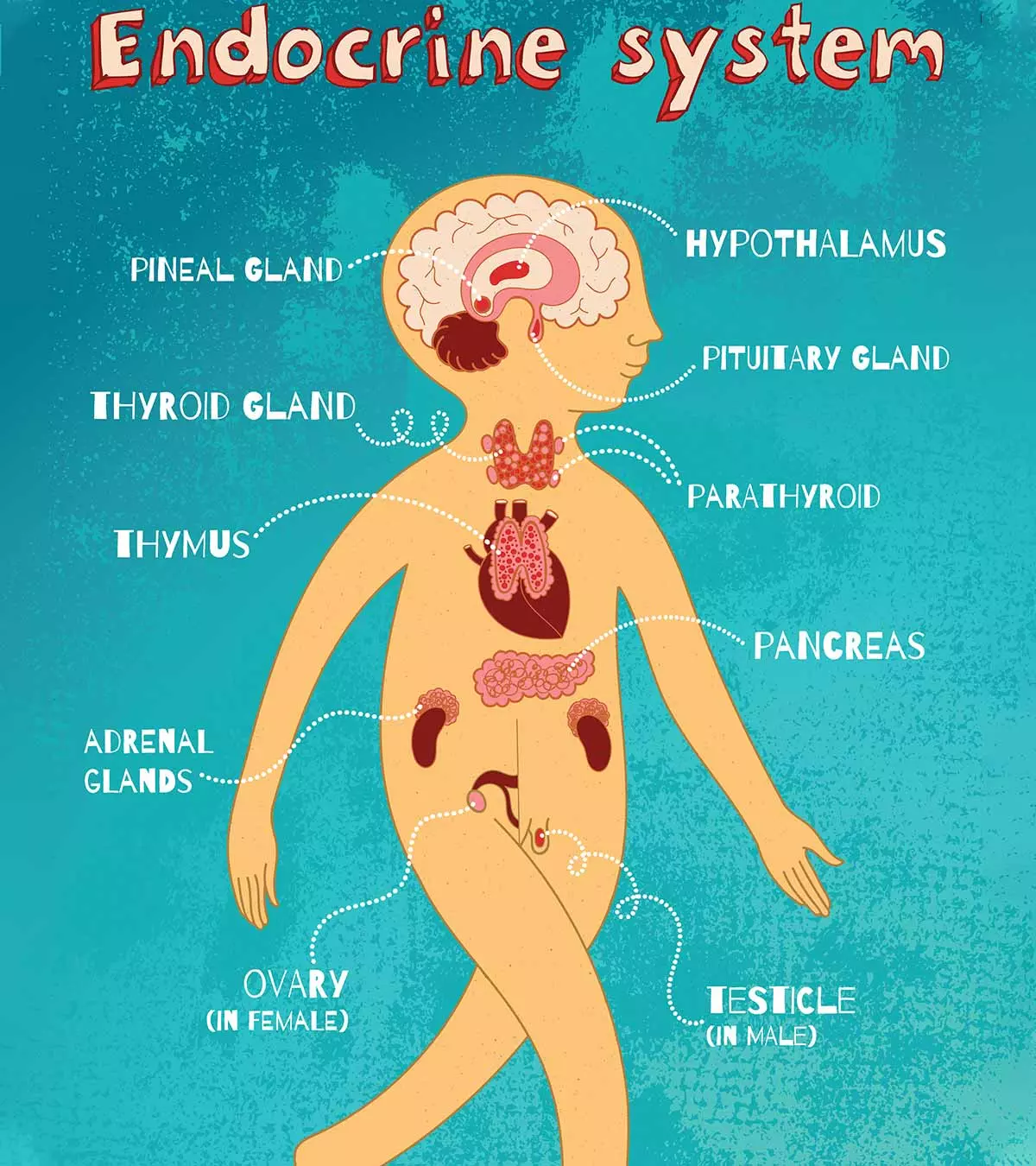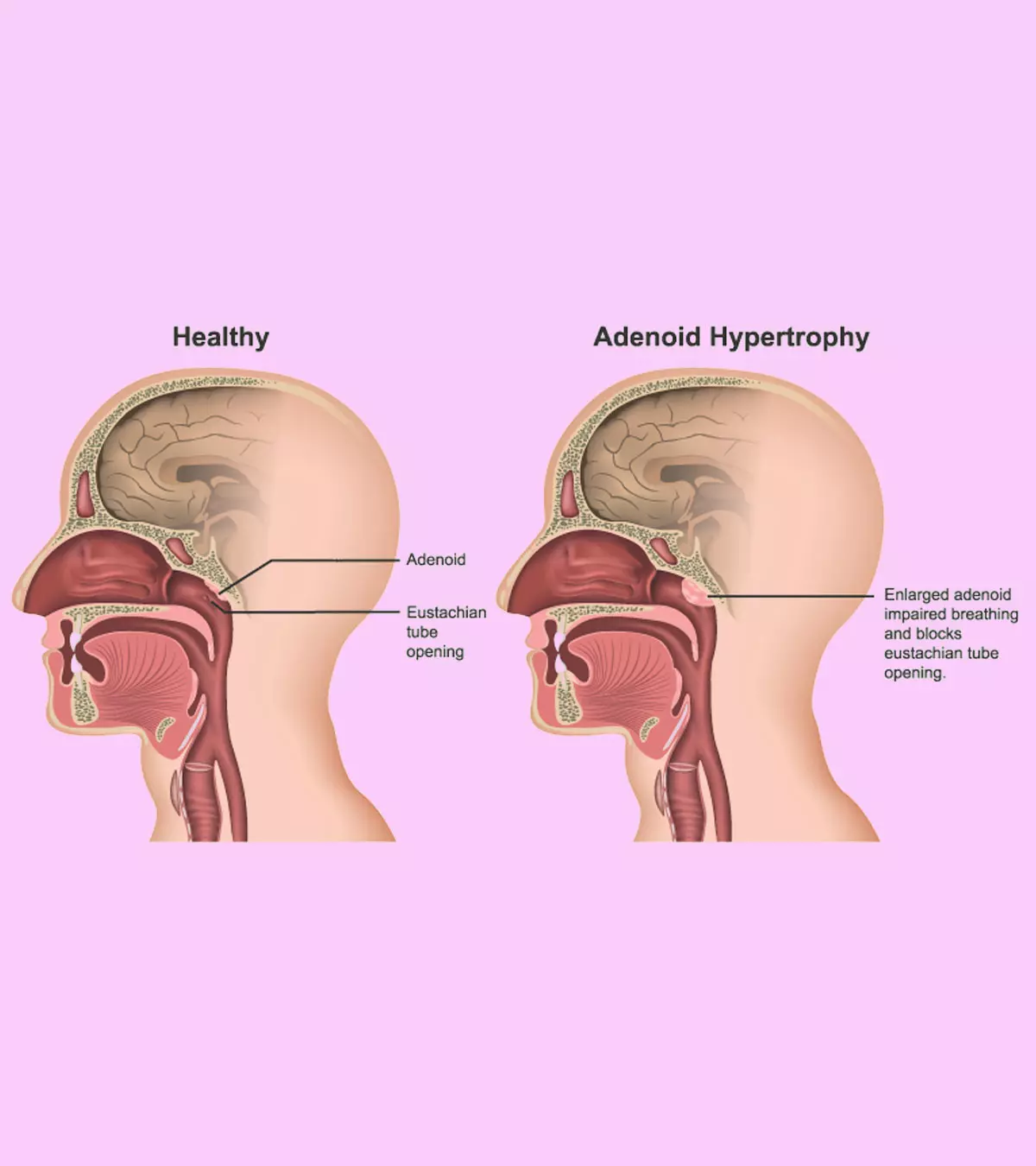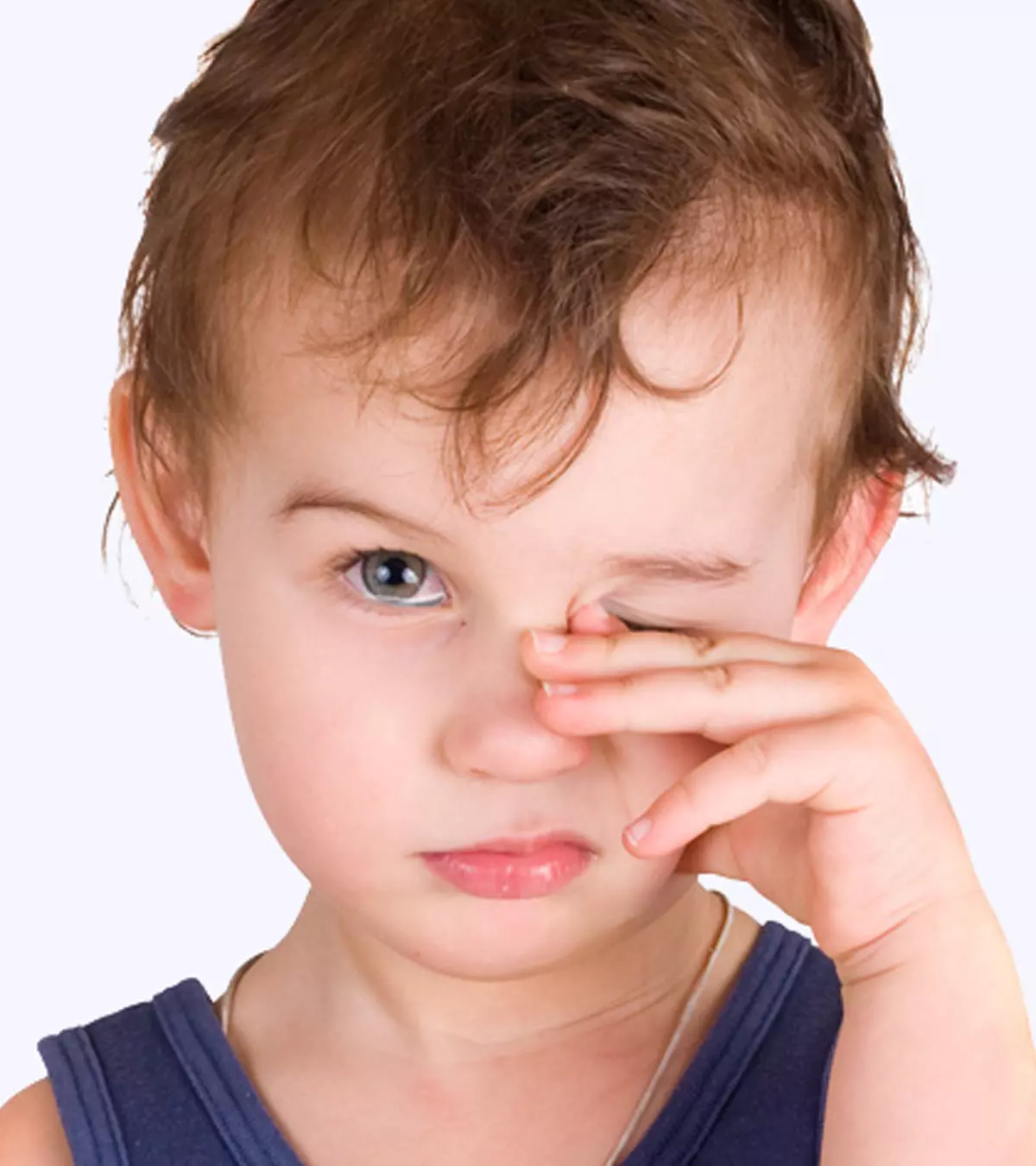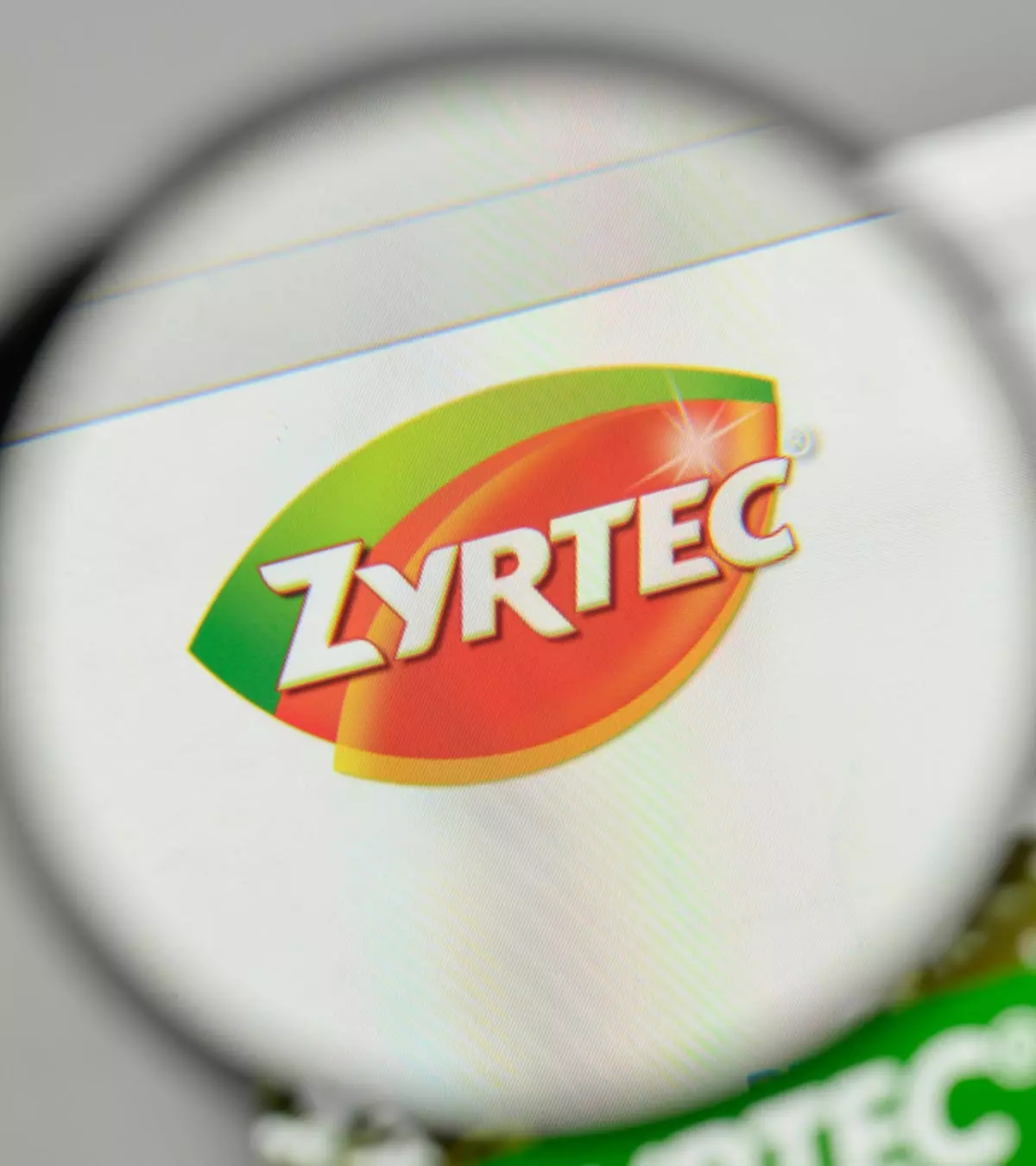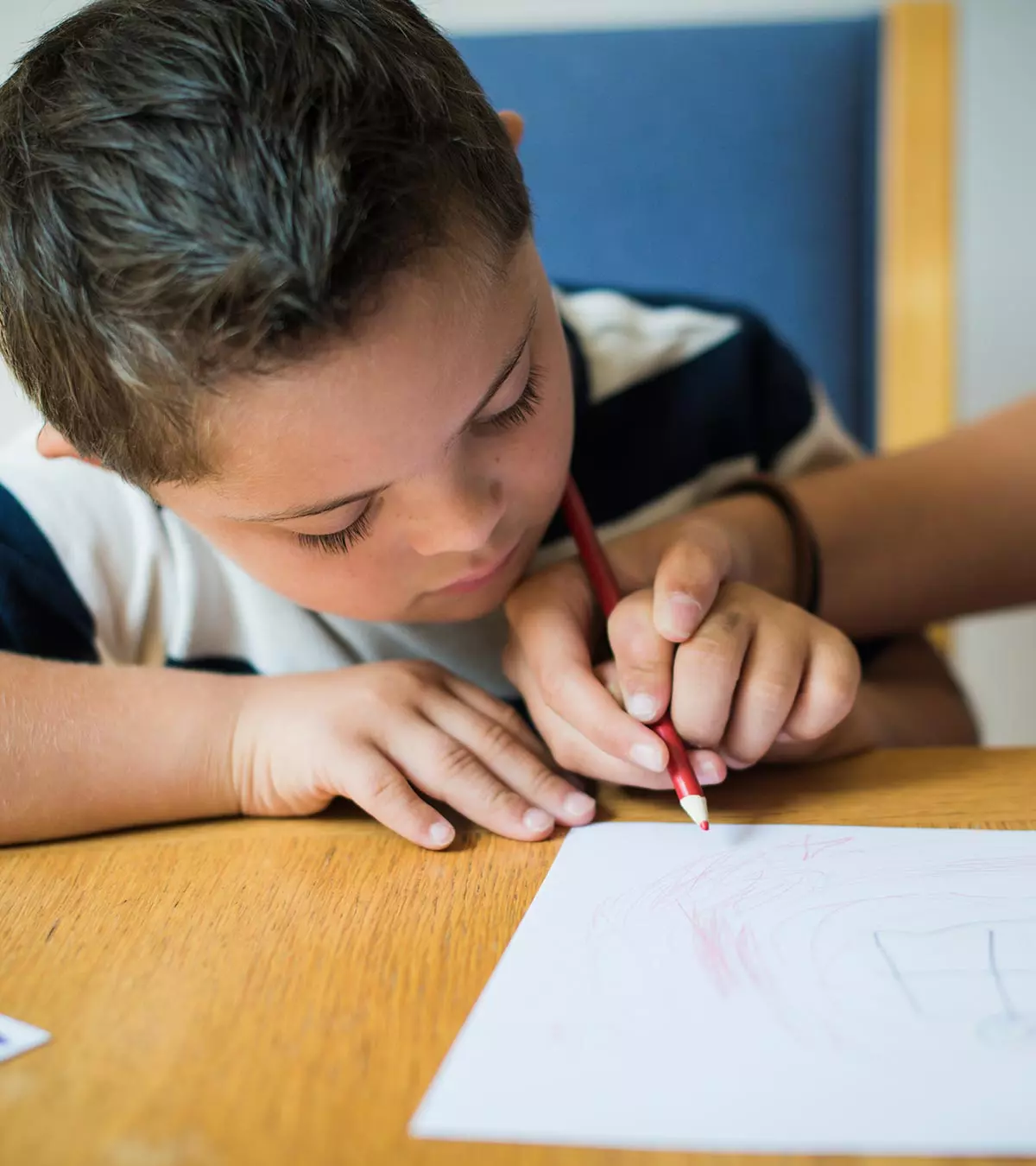
Image: Midjourney/ MomJunction Design Team
Balanitis refers to inflammation of the head or glans of the penis (1). Balanitis in children generally self-resolves within two to three days. The condition may occur at any age but is frequently seen in uncircumcised boys below the age of four years, as they may not be able to retract or clean under the foreskin of a penis (2).

Conservative interventions may be helpful for managing balanitis in most children. However, recurrent balanitis may require surgical intervention, such as circumcision.
This post tells you about the causes, symptoms, treatment, complications, and prevention methods for balanitis in children.
Key Pointers
- Balanitis or inflammation of the head or glans of the penis in children may occur due to a reaction from soaps or other irritants.
- Other factors such as infections and skin problems may also contribute to the swelling, itching, or other symptoms of Balanitis.
- Recurrent Balanitis may cause urinary tract infection.
- Mild symptoms may resolve in a few days, but severe ones may require medicines or medical treatment.
Causes Of Balanitis In Children
Children are more likely to develop chemical balanitis, a mild redness due to irritation from soaps or other irritants (3). Approximately 5% of boys younger than five years may develop infectious balanitis (4).
Fungal or yeast infections in children are a common cause of Balanitis. Some other possible factors that may contribute to this condition include (5) (6) (7).
- Pulling or touching the foreskin frequently
- Bacterial infections
- Fungal (yeast) infections
- Poor hygiene, resulting in the build-up of smegma (secretion of oil glands under the foreskiniA double-layered fold of skin that covers the glans and urethral opening of the penis. ) that may irritate the skin
- Irritation from urine
- Irritation from soaps, shower gels, and other products
- Phimosis (tight foreskin)
- Skin or dermatological problems, such as eczemaiA common inflammatory skin condition causing dry, itchy, and red patches. or psoriasisiA chronic autoimmune condition where skin cells multiply too quickly, creating thick, scaly patches.
- Allergic reactions to certain clothing materials, detergents, or diapers
- Injury to the foreskin or glans
- Prolonged exposure of the foreskin to urine
- DiabetesiCharacterized by high blood sugar levels as the body either doesn't produce enough insulin, an organic substance. may increase the risk
- Excessive washing or scrubbing can irritate the sensitive skin of the genital area, leading to balanitis.
Balanitis is usually seen in boys who are uncircumcised, meaning those who have an intact foreskin. They may develop inflammation of the foreskin known as posthitis with similar etiologici Causing the disease or contributing to a disease’s development factors.
Symptoms And Signs Of Balanitis In Children
Balanitis may cause penile discomfort and itching in children. You may also notice redness and inflammation of the glans. The foreskin may appear tight and may not be able to retractiWhen the foreskin of the penis separates from the glans. adequately in uncircumcised boys.
The common symptoms and signs of balanitis may include (6)(8):
- Erythema (redness)
- Whitish spots
- Swelling and soreness
- Itching
- Burning
- Thick fluid build-up
- Discharge or pus
- Foul smell
- Increased tightness of the foreskin
- Pain during urination
- Fever
- Increased irritability or discomfort
Fever is one of the common signs of infectious balanitis. You may seek prompt pediatric care from a specialist if your son has symptoms of balanitis since the infection may spread to the urinary tract. Usually, balanitis does not cause severe problems in children. However, repeated infections may warrant surgical treatments.
Complications Of Balanitis In Children
In rare cases, balanitis may occur with posthitis, an inflammation of the foreskin. If balanitis and posthitis occur together, it is called Balanoposthitis. Recurrent balanitis with phimosis (tight foreskin) may cause phimosis to last longer if balanitis is left untreated. It may also increase the risk of frequent urinary tract infections (4). According to a report by the American Academy of Pediatrics (AAP), phimosis, or a foreskin that cannot be pulled back, can be normal (physiologic) or caused by an underlying issue (pathologic) (9).
If balanitis is not treated, localized swelling (edema) may develop. The combination of swelling and inflammation can cause the foreskin to stick to the glans (head of the penis). In more severe cases, this can progress to penile cellulitis (a skin infection) and adhesions (scar tissue that causes the foreskin and glans to stick together) (6).
Although most cases may resolve within a few days without any treatment, recurrent balanitis may cause severe pain, penile discharge, and scarring in children. Scarring may interfere with urine flow and cause discomfort. You may seek medical care if your child has balanitis more than once.
Prevention Of Balanitis In Children
Ensuring good personal hygiene for kids is an effective way to prevent balanitis in children. Some other preventive measures that may help prevent this condition include (10) (11):
- Do not frequently retract the foreskin.
- Keep the penile area as dry and clean as possible.
- Wash with lukewarm water regularly.
- Avoid soaps, gels, and other products that may irritate the skin.
Parents may ensure penile hygiene for young boys. You may also teach your child to keep the area clean from an early age. Speak to a doctor to learn more about good penile hygiene.
 Quick fact
Quick factDiagnosis Of Balanitis In Children
Symptoms and physical examination of the penis could help diagnose balanitis in children. Additional tests are often ordered to exclude the diagnosis of certain infections that may cause similar symptoms. Tests may include (2) (6) (13):
- Urine samples or swabs from the affected area to check for bacterial or fungal infections. This helps identify the presence of Candida (yeast) or bacterial infections.
- Blood tests may be ordered if the balanitis is severe, recurrent, or difficult to treat.
- HSV (Herpes Simplex Virus) testing if there are vesicular (blister-like) or ulcerative lesions.
- A potassium hydroxide (KOH) test to identify fungal infections like Candida.
- Allergy tests, if allergies are suspected.
 Quick fact
Quick factTreatments For Balanitis In Children
Most cases of balanitis can be managed conservatively without any surgical procedures. Conservative managementiUse of oral and topical medical treatment and other non-invasive procedures. may include taking adequate hygiene measures and avoiding irritants. The other treatment options may include the following (5).
1. Medications
Antibiotics oral or topical antibiotic creams are prescribed for bacterial infections. Fungal infections are treated with topical antifungal creams. Steroid creams are often prescribed to reduce the severity of symptoms.
The condition usually improves within three to five days of treatment, but you may have to complete the full treatment course to avoid recurrence (14).
 Quick tip
Quick tip2. Balanitis surgery
Children may have a second episode of infection if the earlier infection is not treated properly. Failure to ensure good hygiene could also increase the risk of another bout of infectious balanitis. Surgical treatment is chosen if the child has a recurrent infection and does not respond to other treatment options, such as medications. CircumcisioniSurgical removal of the foreskin of the penis. , the removal of the foreskin, is the surgical treatment for balanitis. Approximately 35% of circumcised children worldwide are affected by Balanitis Xerotica Obliterans, a chronic, progressive inflammatory condition affecting the foreskin and glans penis (15).
Frequently Asked Questions
1. What can be mistaken for balanitis?
Genital herpes in children is often mistaken for balanitis. Skin conditions such as psoriasis and other uncommon conditions of the penile skin may also be mistaken for balanitis (6). Dr. Luke Prest, a board-certified pediatrician from Ardmore, Pennsylvania, says, “Diseases such as nummular eczema, a reaction to medications, a human papillomavirus (HPV) infection, and scabies can be mistaken for balanitis.”
2. How do I know if my child has balanitis and whether it’s bacterial or fungal?
It can be ascertained only if the doctor orders specific tests to identify the causative organism.
3. Can I use Vaseline for balanitis?
You can apply soft white paraffin ointment (petroleum jelly or Vaseline® ointment) under the foreskin after bathing or showering (16). This may help with balanitis. However, ensure the area is thoroughly cleaned daily, as petroleum jelly may attract dust and dirt.
4. Is Epsom salt good for balanitis?
Add a teaspoon of the regular table salt to a bathtub of clean, warm water. Have your child soak in it and ensure that the water is deep enough to cover the penis (7). Repeat two to three times a day. However, consult a doctor about using Epsom salt for this purpose.
5. What are the different types of balanitis?
Balanitis has several main types. Zoon balanitis shows as shiny red patches with “cayenne pepper” spots in older uncircumcised men, circinate balanitis appears as small painless ulcers related to reactive arthritis, and pseudoepitheliomatous keratotic and micaceous balanitis causes scaly growths in men with late-life circumcision (6). While these specific types mainly affect adults, general balanitis is common in young boys.
Balanitis in children mainly occurs due to poor hygiene or certain infections and usually resolves by itself within a day or two. However, if the symptoms persist and cause irritation, it is advised to consult the doctor for a proper diagnosis. If left untreated, balanitis might lead to severe urinary tract infection. Teach your boys to regularly clean the penile area with lukewarm water and keep the area as dry as possible to avoid complications.
Infographic: Identify And Cure Balanitis In Children
Balanitis can be uncomfortable, and as a parent, you may like to resolve the problem soon. Take a look at the following infographic, which provides the following information about balanitis.
- What causes balanitis
- Symptoms of balanitis
- Preventive measures for balanitis
References
- S Edwards; (1996); Balanitis and balanoposthitis: a review.
https://pmc.ncbi.nlm.nih.gov/articles/PMC1195642/ - Balanitis.
https://my.clevelandclinic.org/health/diseases/21186-balanitis - Suzanne Lippert and N. Ewen Wang; Pediatric Genitourinary and Renal Disorders.
https://www.sciencedirect.com/topics/medicine-and-dentistry/balanitis - Balanitis In Children.
https://www.londonchildrensurgery.co.uk/balanitis.php - Balanitis.
https://www.nhs.uk/conditions/balanitis/ - Balanitis.
https://www.ncbi.nlm.nih.gov/books/NBK537143/ - The penis and foreskin.
https://www.rch.org.au/clinicalguide/guideline_index/the_penis_and_foreskin/ - Balanitis.
https://dermnetnz.org/topics/balanitis - Phimosis (Chapter 312).
https://publications.aap.org/pediatriccare/book/348/chapter-abstract/5785109/Phimosis-Chapter-312?redirectedFrom=fulltext - Balanitis.
https://www.columbiadoctors.org/health-library/condition/balanitis/ - Balanitis and balanoposthitis.
https://www.chusj.org/getmedia/70164122-ac4d-4422-972f-dcd24649f061/depliant-F-7058A-Balanitis-and-balanoposthitis_web.pdf.aspx?ext=.pdf - Penis and foreskin care.
https://www.rch.org.au/kidsinfo/fact_sheets/Penis_and_foreskin_care/ - Balanitis.
https://www.sexualhealthsheffield.nhs.uk/wp-content/uploads/2015/03/Balanitis.pdf - Balanitis.
https://www.health.harvard.edu/a_to_z/balanitis-a-to-z - Soledad Celis et.al; (2014); Balanitis xerotica obliterans in children and adolescents: A literature review and clinical series.
https://www.sciencedirect.com/science/article/abs/pii/S147751311300288X - Balanitis & Balano-posthitis.
https://www.dermcoll.edu.au/atoz/balanitis-balano-posthitis-2/
Community Experiences
Join the conversation and become a part of our nurturing community! Share your stories, experiences, and insights to connect with fellow parents.
Read full bio of Maria Carmela Villania-Mamauag
- Dr. Luke Prest is a general pediatrician who has been providing medical care to children and adolescents since 2019. He graduated in medicine from the University of Iowa in 2016 and has worked with the Children's Hospital of Philadelphia.
 Dr. Luke Prest is a general pediatrician who has been providing medical care to children and adolescents since 2019. He graduated in medicine from the University of Iowa in 2016 and has worked with the Children's Hospital of Philadelphia.
Dr. Luke Prest is a general pediatrician who has been providing medical care to children and adolescents since 2019. He graduated in medicine from the University of Iowa in 2016 and has worked with the Children's Hospital of Philadelphia.
Read full bio of Dr Bisny T. Joseph
Read full bio of Dr. Ritika Shah
Read full bio of Shinta Liz Sunny






